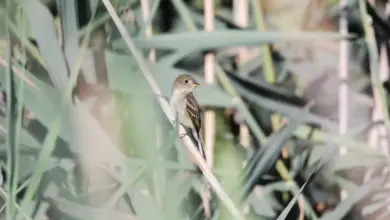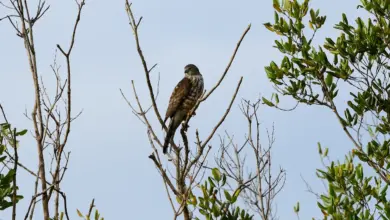Kosrae Island Crake aka Kusaie Island Crake or Kittlitz’s Rail
Kosrae Island Crake aka Kusaie Island Crake or Kittlitz’s Rail
The Kosrae Island Crake or Kusaie Island Crake (Porzana monasa), sometimes also stated as Kittlitz’s Rail, is an extinct bird from the family Rallidae. It occurred on the island of Kosrae and perhaps on Ponape in the south-western Pacific which belong both to the Caroline Islands.
The Caroline Islands, situated in Micronesia, form a large archipelago of widely scattered islands in the western Pacific Ocean, northeast of New Guinea.
Its preferred habitat was coastal swamps and marshland covered with taro plants (Colocasia esculenta).
Description
Kosrae Island Crake was disovered in 1827 by Heinrich von Kittlitz. Von Kittlitz described its plumage as general black with blueish gloss. The quills were more brownish. The chin and the middle of the troat were brown. The surface of its tail was brownish-black. The undertail coverts exhibit white spots.
The inner wing coverts were brownish and were spotted with white. The outer edge of the first primary was dull brown. Eyes, legs, and feet had a reddish hue. The bill was black. Its size was about 18 cm.
Controversial data exist according to its ability to fly. X-ray measurements of the Carpometacarpii led to the assumption that it was flightless. However, its native name nay-tay-mai-not which means “the one who lands in the taro plot” might imply that the ability to fly was present.
Extinction
The Kosrae Crake is only known by two specimens taken by von Kittlitz in December 1827 in the swamps of Kosrae. The two skins are now in the Russian Academy of Sciences in Saint Petersburg.
The story of its extinction is similar to the vanishing of the Kosrae Island Starling (another extinct species from Kosrae). Even in 1828 von Kittlitz described this bird as uncommon.
German ornithologist Otto Finsch failed to find this bird on his expedition in 1880 and the Whitney Expedition of the American Museum of Natural History in 1931 remained unsuccessful on a survey after that species.
They became apparently victims of rats that had overrun Kosrae after they were able to escape from missionary and whaling vessels which were careened on the beach of Kosrae.



